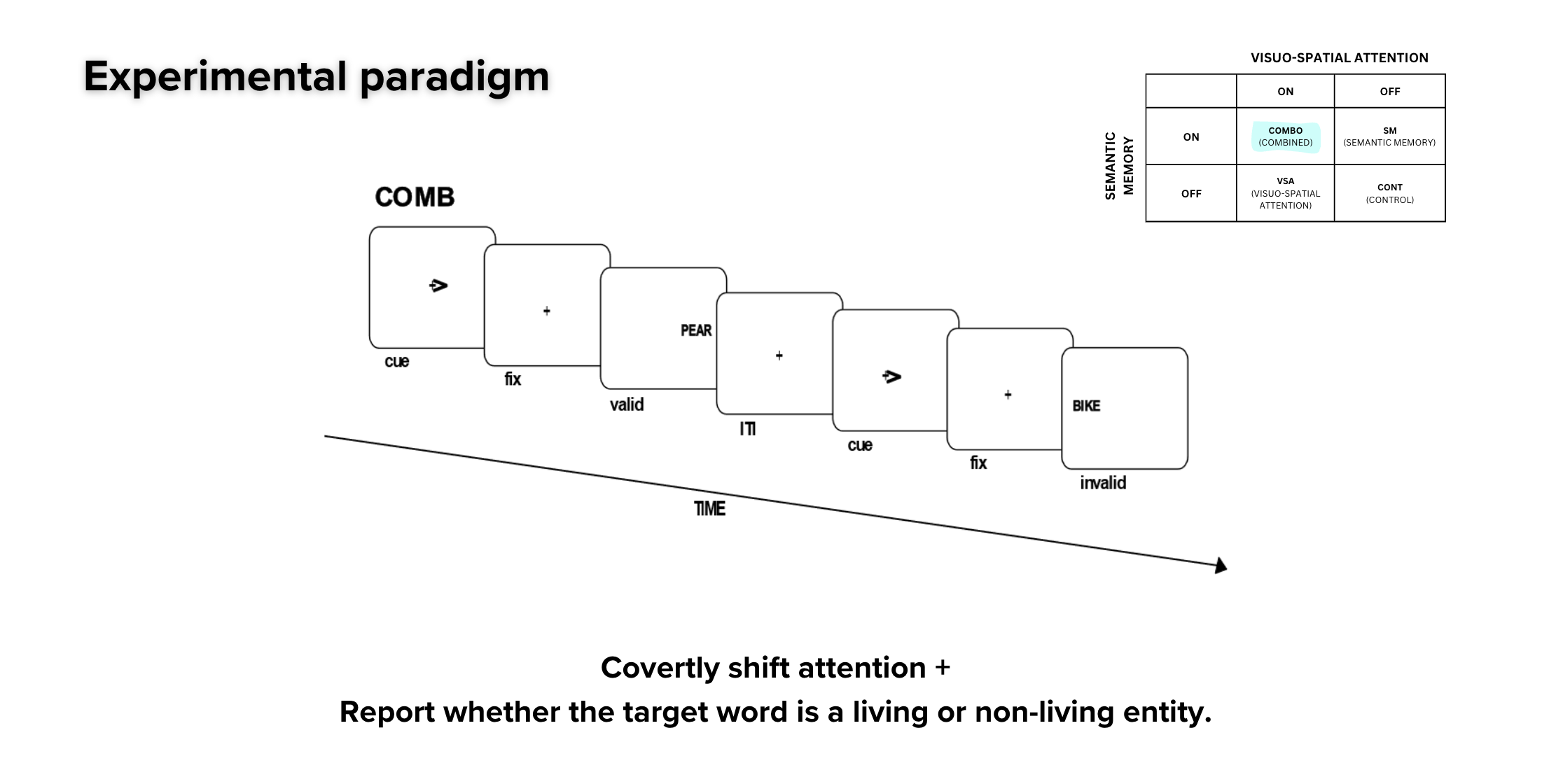
Our master student Sandeep Kaur presented her thesis project “Interactions between visuo-spatial attention and semantic memory in large-scale cortical Networks.
Several studies have shown that the intraparietal sulcus (IPS), a component of the dorsal attentional network (DAN), is implicated in tasks requiring spatial attention, whereas the angular gyrus (AG), a part of the default mode network (DMN), contributes to the retrieval of relevant information in semantic memory tasks. Although spatial attention and semantic memory processes are considered relatively independent – and allegedly supported by competing brain networks – in real-world scenarios they occur concurrently. How such large-scale networks may interact in a combined task has never been explored to date. Indeed, there may be a differential participation of the networks’ nodes, or a third-party source (e.g., the cingulo-opercular network: CON) may indirectly mediate their interaction. For this purpose, we will employ an fMRI block design with four conditions (i.e., visuo-spatial attention, semantic memory, combined, and control). After localising the DAN and DMN regions involved in the isolated visuo-spatial attention and semantic memory conditions, an identifying the DAN, DMN, and CON through independent component analysis of resting-state data, we will compare the combined with the isolated conditions to eventually highlight third- party brain regions (e.g., CON) supporting the interaction, which will be used as connectivity seeds for functional and effective connectivity analyses (seed-based gPPI).